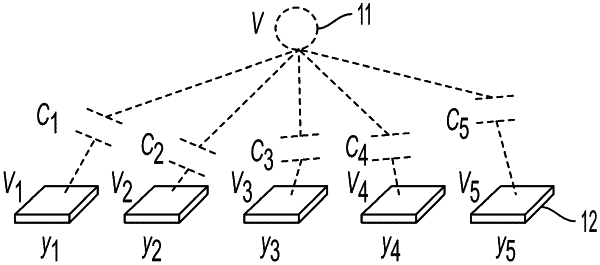| CPC G06F 30/27 (2020.01) [G06F 30/17 (2020.01); G06N 3/04 (2013.01); G06F 2111/04 (2020.01)] | 20 Claims |

|
1. A system for machine-learning enabled micro-assembly control with an aid of a digital computer, comprising:
one or more processors implementing one or more machine learning algorithms, the one or more processors configured to:
obtain one or more parameters of a system for positioning a micro-object, the system comprising a plurality of electrodes, each of the electrodes being programmable, the electrodes configured to induce a movement of the micro-object when the micro-object is proximate to the electrodes upon a generation of one or more electric potentials by one or more of the electrodes;
model capacitance between the micro-object and the electrodes using the parameters;
estimate a position of the micro-object with a sensor;
receive further position of the micro-object;
define using the capacitance a continuous representation of a dynamic model for movement of the micro-object due to electrode potentials generated by at least one of the plurality of the electrodes, wherein the dynamic model is associated with constraints expressed as expectations;
apply one of the machine learning algorithms to at least a portion of the continuous representation of the dynamic model to perform an optimization of electrode potentials to be generated by at least one of the plurality of the electrodes to move the micro-object from the estimated position to the further position; and
use the optimized electrode potentials to actuate at least one of the plurality of the electrodes to induce the movement of the micro-object from the estimated position to the further position.
|